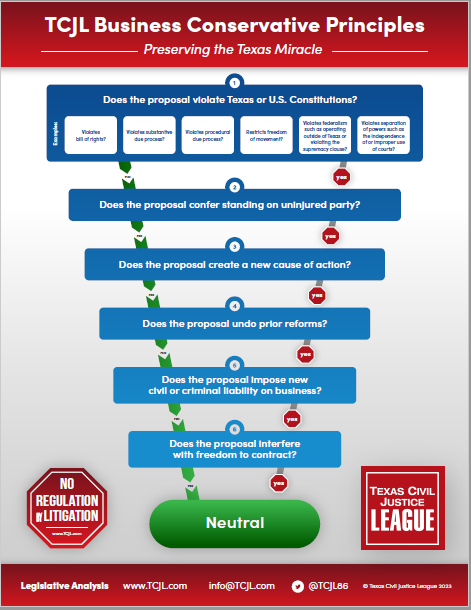 The Texas Alliance for Patient Access (TAPA), joined by the Texas Medical Association, Texas Osteopathic Medical Association, and Texas Hospital Association, has filed an amicus curiae brief supporting an emergency care physician’s petition for review in a case involving the summary judgment no evidence standard in the Chapter 74, CPRC, context.
The Texas Alliance for Patient Access (TAPA), joined by the Texas Medical Association, Texas Osteopathic Medical Association, and Texas Hospital Association, has filed an amicus curiae brief supporting an emergency care physician’s petition for review in a case involving the summary judgment no evidence standard in the Chapter 74, CPRC, context.
Kristy Marsillo, D.O. v. Robin Dunnick, Individually and As Next Fried to Raynee Dunnick, and Dana Dunnick (No. 03-21-00296-CV, decided August 31, 2022; No. 22-0836) arose from a snakebite injury sustained by plaintiff’s daughter Raynee. Dr. Marsillo, the emergency room physician, assessed and treated Raynee in accordance with the hospital’s clinical guidelines for snakebites. Under those guidelines, snakebite patients are assessed using an algorithm that produces a “severity score.” If the score is 3 or less, the physician will monitor the patient for further symptoms. Once the score exceeds 3, the guidelines call for the administration of antivenom. In this case, Raynee’s score did not rise above 3 until three hours after she was admitted to the emergency room, at which point Dr. Marsillo started antivenom treatment. Raynee was subsequently transferred to Dell Children’s Medical Center, where she was treated with additional antivenom and eventually discharged. Plaintiff sued Dr. Marsillo, alleging that she acted with willful and wanton negligence in failing to administer antivenom immediately upon Raynee’s arrival at the hospital, which caused Raynee to suffer pain, disfigurement, and permanent impairment. Dr. Marsillo moved for a non-evidence summary judgment, alleging that plaintiff did produce more than a scintilla of evidence establishing liability. The trial court granted the motion. Plaintiff appealed.
The Austin Court of Appeals reversed and remanded on the basis that plaintiff’s expert testimony presented more than a scintilla of evidence that Dr. Marsillo could possibly have acted willfully and wantonly despite her adherence to the clinical guidelines and her own medical judgment. The court first adopted the position taken by other intermediate appellate courts that the willful and wanton standard equates to gross negligence. In order to show gross negligence, plaintiff much show: (1) “that the defendant’s acts or omissions departed from the standard of care ‘to such an extent that it creates an extreme degree of risk of harming others, considering the probability and magnitude of the potential harm to others,” and (2) “whether [defendant] knew about the peril caused by her conduct and continued to act in a way that demonstrated she did not care about the consequences” (citations omitted). These “objective” and “subjective” prongs of the test require evidence showing that the physician not only deviated from the standard of care, but in doing so created a high likelihood of harm to the plaintiff, knew about that likelihood, and proceeded anyway with conscious disregard for the rights, safety, and welfare of others.
The problem with the court’s opinion is not its restatement of the law, but its application to the summary judgment evidence in this case. The court rested its ruling on the testimony of plaintiff’s expert, who opined that rattlesnake bites must be immediately treated with antivenom and that Dr. Marsillo’s three-hour delay departed from the standard of care. Even if the expert was right about the standard of care, however, evidence that Dr. Marsillo’s adherence to the clinical guidelines created “an extreme degree of risk of harming” Raynee or that Dr.Marsillo actually knew about the risk and consciously disregarded it seems entirely lacking. As TAPA points out in its brief, the evidence clearly showed that Dr. Marsillo diligently followed the appropriate guidelines and immediately treated Raynee with antivenom as soon as the guidelines called for it, hardly “conscious disregard” of the patient. The court’s opinion notes that Dr. Marsillo did not present any evidence of the risks of prematurely administering antivenom (which are statistically significant) but begs the question of whether a physician who follows clinical guidelines should have to defend them every time a plaintiff’s expert questions them or speculates that doing something different would have made any difference.
TAPA’s brief argues further that if the summary judgment standard is applied the way the court did it, it would significantly lower the bar in Chapter 74 cases (and for that matter, in all tort cases) and undermine the 2003 policy decision to protect emergency room physicians from liability in all but the most egregious cases. In our view, the court’s opinion also has the potential to collapse the distinction between negligence and gross negligence more generally, in some ways similar to SCOTX’s notorious 1981 opinion in Burk Royalty Co. v. Walls, 616 S.W.2d 911 (Tex. 1981). The subsequent repudiation of Burk Royalty, first by SCOTX in Moriel and then by the Legislature in 1995 and 2003, clearly rejected the position that facts giving rise to mere “surmise or suspicion” could defeat summary judgment. From what we can tell, the expert opinion offered in this case doesn’t say anything other than “you should have done it differently” and “you knew you should have done it differently.” The problem is, the expert did not explain how adhering to clinical guidelines promulgated by the American Academy of Family Physicians or other organizations of clinicians and researchers, was even unreasonable, much less egregious. Neither did he or plaintiff present any evidence of Dr. Marsillo’s actual state of mind, or subjective awareness, that diligently following guidelines that balanced the risks and benefits of antivenom treatment created an “extreme degree of risk” to the patient. The only demonstrated facts show quite the opposite: Dr. Marsillo closely attended to the patient and administered antivenom when the standard of care required.
We hope that SCOTX grants review, both for the sake of Chapter 74 and the larger risk of dilution of the gross negligence standard in tort cases á la Burk Royalty.











